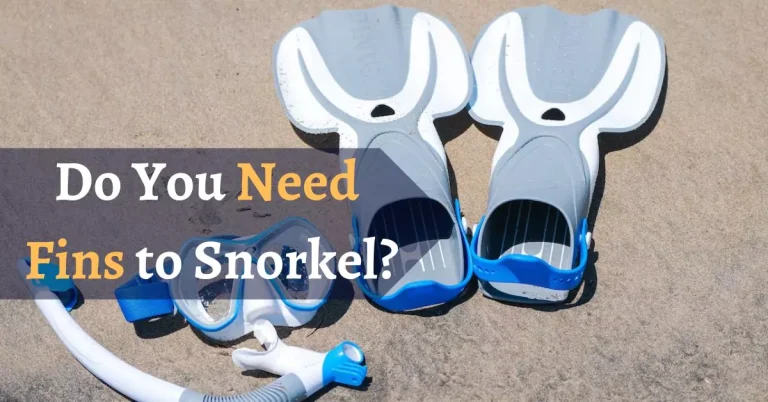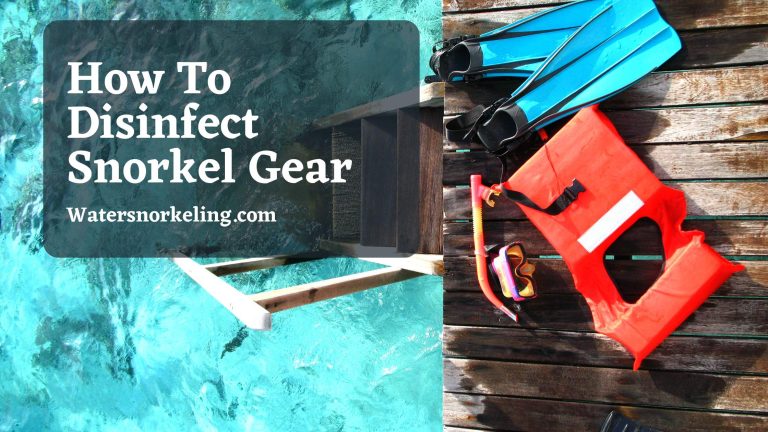How To Equalize Ear When Diving? An Exclusive Guide 2024
Diving can be uncomfortable for some people. It can happen when the air pressure in your ear changes during the dive. When you return to the surface and equalize your ears by clearing them out on the surface, this can lead to an uncomfortable feeling and even pain.

When diving to the bottom of the sea, you should be aware of one thing. The pressure on your ears is greater than in the air. It indicates that diving affects your ear canals and may cause severe pain if not handled correctly. Fortunately, there are effective ways to “how to equalize ear when diving?” Continue to get more about it.
How To Equalize Ear When Diving? Step By Step Answer
Equalizing Ear pressure when diving is a necessary safety measure to prevent injury to the inner ear. Several methods can equalize ear pressure when diving, including the Valsalva, Frenzel, and Toynbee. Each method has flaws, so the right one depends on individual needs and preferences.
- Valsalva Maneuver
The Valsalva maneuver is the most commonly used method for equalizing ear pressure when diving. This method involves pinching the nose shut and blowing gently against the closed nostrils. The pressure created by the blowing forces air into the middle ear, equalizing the pressure between the inner and outer ear.

- Plus Point
It is easy to perform and can be used at any depth.
- Drawback
It can be challenging to perform if the diver has cold or congested sinuses, and the blowing can cause discomfort in the ears.
- Frenzel Maneuver
The Frenzel maneuver is another method to equalize ear pressure when diving. It involves closing the glottis (the opening between the vocal cords) and making a swallowing motion. The eustachian tube’s movement opens and equalizes the pressure inside the ear.

- Plus Point
You can use this method even if you have a cold or congested sinus.
- Drawback
It requires practice and can be challenging to perform at deeper depths.
- Toynbee Maneuver
The Toynbee maneuver is a less commonly used method for equalizing ear pressure when diving. It involves swallowing while pinching the nose shut. The technique can be helpful for some divers who have difficulty with the other methods.

- Plus Point
It is applicable even when the diver has a cold or congested sinus, and it is easy to perform.
- Drawback
It is hard to carry out at deeper depths and may not be as effective as other methods.
Ultimately, the best method for equalizing ear pressure when diving will depend on the individual diver. Some divers may find one method more effective than others, and some may need to use a combination of methods. Before diving, it is essential to experiment with different ways and find the best one.
Divers should pay attention to any discomfort or pain in their ears and stop diving if they experience any symptoms of barotrauma. Equalizing ear pressure when diving is a crucial safety measure to prevent injury to the inner ear. Divers have several options to choose from, so the choice is always there.
Why Is Ear Equalization Important For Divers?
Ear equalization is essential for divers because as a diver descends underwater, the pressure surrounding their body increases. Insufficient equalization of this pressure may cause discomfort or ear pain. The eardrum can be damaged if the pressure difference becomes too great.
Equalizing the ears allows a diver to release the pressure in the middle ear to match the pressure of the surrounding water. It prevents discomfort and pain and also prevents damage to the eardrum.
Additionally, failure to equalize the ears can lead to the development of barotrauma, which can cause a range of symptoms such as vertigo, hearing loss, and even facial paralysis. Barotrauma can be a serious condition. If not treated promptly can lead to permanent damage.
Finally, ear equalization is necessary for divers because it allows them to safely and comfortably equalize the pressure in the ears as they tend to descend and prevent injury or damage to the eardrum due to barotrauma.
Equipment Needed for Ear Equalization
The following table describes the apparatus you must have to equalize your ear for diving:
| Equipment | Description |
| Earplugs or earmuffs | To protect the ears from damage while equalizing. |
| Equalization tool | A device that allows for controlled release of pressure in the ear, such as a Valsalva maneuver device or a Frenzel lens. |
| Depth gauge or dive computer | To monitor depth and track progress during equalization. |
| Dive mask | To keep water out of the nose while equalizing. |
It is crucial to learn proper ear equalization techniques and seek guidance from a qualified instructor before attempting it, particularly in diving. Additionally, be aware of any underlying medical conditions that may affect your ability to equalize your ears.
Also, Read Do You Need Fins to Snorkel?
Frequently Asked Questions (FAQs)
- Why Am I Unable To Equalize My Ear When Diving?
Equalizing ears while diving is a common problem that many divers face. Air in the ear is under higher pressure than water outside, causing this sensation. Some possible reasons why you may be unable to equalize your ears while diving is as follows:
- Lack of technique: Equalizing ears requires a specific technique, such as the Valsalva maneuver (pinching the nose and blowing gently) or the Frenzel maneuver (clenching the back of the throat while trying to blow out). If you are using the correct technique, you may be able to equalize your ears.
- Sinus or ear congestion: A cold or sinus congestion can make it difficult to equalize your ears. Whenever there is congestion in the middle ear, it can block the Eustachian tubes.
- Ear injury or surgery: A damaged Eustachian tube can make it difficult for you to equalize your ears after an injury or surgery to your ears.
- Fear or anxiety: Fear or anxiety can cause muscle tension, which makes it challenging to perform the Valsalva or Frenzel maneuvers.
- Can Equalize Damage My Ear?
Equalizing ears while diving is a necessary and vital skill, but if done incorrectly or forcefully, it can cause injury to the ears or sinuses. Both Valsalva and Frenzel maneuvers have their potential risks. Let’s have a look at the table to see the associated risks with ear equalizing methods:
| Equalizing Method | Potential Risks |
| Valsalva maneuver (pinching the nose and blowing gently) | 1- Barotrauma (injury to the eardrum) if equalizing is done to forcefully2- Sinus squeeze (injury to the sinuses) if equalizing is not done correctly |
| Frenzel maneuver (clenching the back of the throat while trying to blow out) | 1- Barotrauma (injury to the eardrum) if equalizing is done too forcefully 2- Risk of choking or swallowing air if not done correctly |
Equalizing can be safe if done correctly and with proper technique, but if done incorrectly or too forcefully, it can cause injury to the ears or sinuses. You can minimize these risks with the correct equalizing technique and practicing it before diving. We recommend you consult a doctor before diving if you have had ear surgery or injury or have a cold or sinus congestion.
- How Do Divers Fix Ear Pressure?
Divers use a technique called equalizing to fix ear pressure. Equalizing is adjusting the pressure inside the middle ear to match the pressure outside the ear. It allows the eardrum to move freely and prevents pain or injury. There are some methods of equalizing ear pressure that divers use:
- Valsalva Maneuver
- Frenzel Maneuver
- Toynbee Maneuver
- Low-Pressure Purge
- How Deep Can You Dive Before Equalizing?
The depth at which a person needs to equalize depends on many factors, including the individual’s lung capacity, diving experience, and the pressure of the surrounding water. Divers need to equalize at shallower depths as they descend and should do so more frequently as they go deeper.
The maximum depth at which a diver can safely equalize is known as their “no-decompression limit” (NDL). It is determined by various factors, including dive duration and the diver’s breathing gas. Without proper training and equipment, diving at depths greater than the NDL can result in severe injury or death.
- How Do Divers Pop Their Ears?
With the methods mentioned in the below-given table, divers pop their ears:
| Method | Description |
| Valsalva Maneuver | The diver gently blows air against a closed glottis, which increases the pressure in the middle ear and equalizes it with the surrounding water pressure. |
| Frenzel Maneuver | The diver closes their glottis and uses the soft palate and pharynx muscles to create a “sneeze” action, increasing the pressure in the middle ear. |
| Toynbee Maneuver | The diver swallows, and the swallowing action opens the eustachian tube and allows the pressure in the middle ear to equalize. |
| Lowry Technique | The diver makes a swallowing motion while pinching the nose and keeping the mouth closed. It is similar to Toynbee Maneuver. |
Note: These methods are only equally effective for some divers, and some may find that one method works better than the others. Practice and find the right method that works for you and use it correctly. Divers should never hold their breath while descending, as this can cause a dangerous condition known as barotrauma.
Final Words
In this article, you learned “how to equalize ear when diving.” No matter what is your level of diving, it is crucial to know how to equalize your ears. To avoid the painful experience, do the appropriate procedures before diving and while diving.






